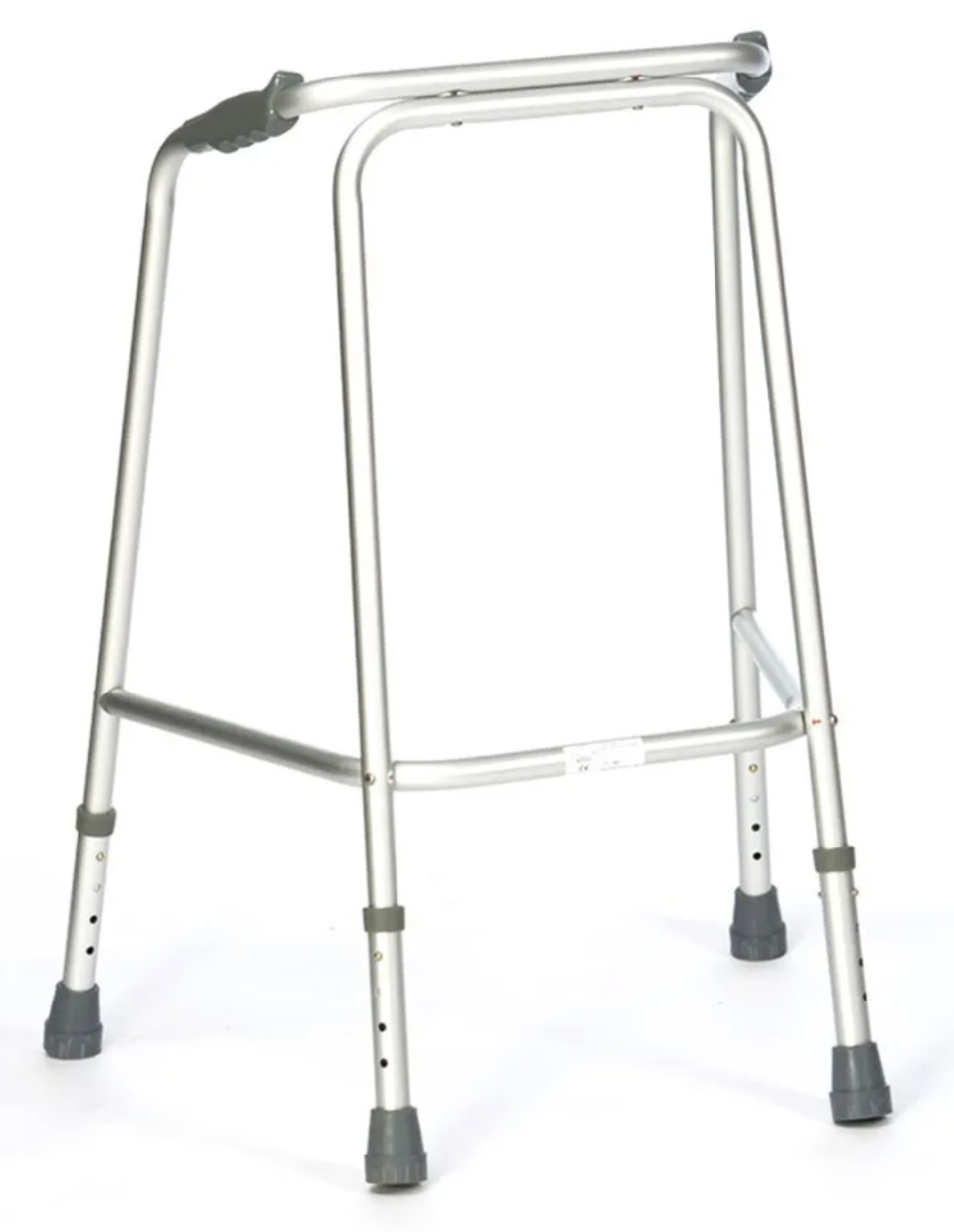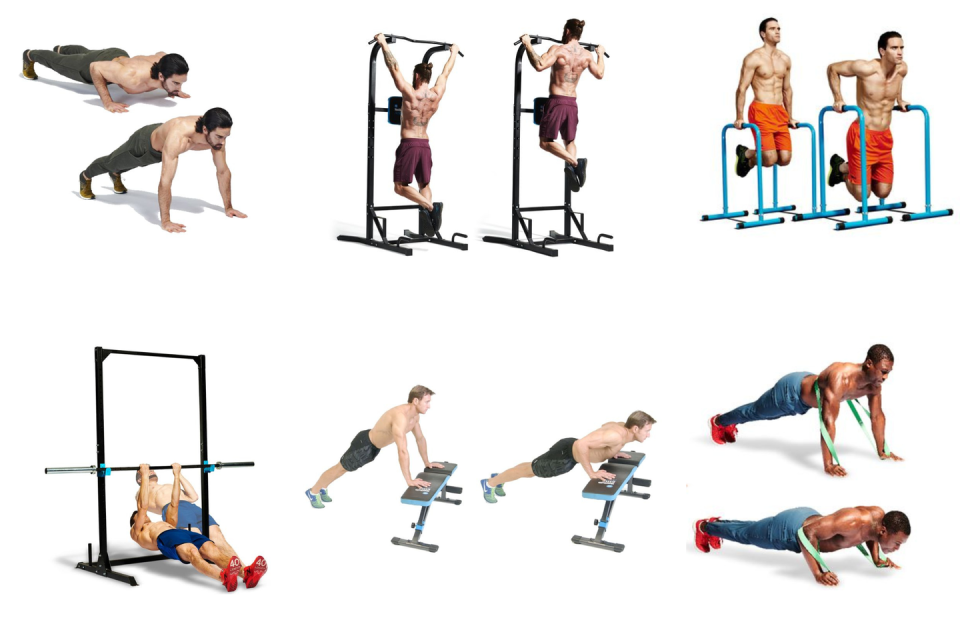Can High Frequency Training Quickly Add Inches to Your Chest, Back and Arms? Our Fitness Editor Thinks So

If you've been hitting the gym hard and heavy but just don't feel like you're building the superhero physique you're aiming for, despite your best efforts, it might seem unlikely that just an extra five or ten minutes each day could completely transform the look of your chest, back, and arms. But given that we're only suggesting five to ten minutes, our fitness editor asks: what have you got to lose?
Lifting Heavy Vs. Lifting Often
I'm a big fan of lifting heavy – big fan. I've competed in strongman competitions, worked up to a triple bodyweight deadlift, and regularly take hundreds of kilograms for a stroll in the form of various different carries. I'm also a staunch believer in progressive overload, the iron-clad rule that says that in order to build bigger muscles, we need to subject those muscles to increasingly more difficult work, and usually, that means bigger, heavier weights.
But long, hard sessions of heavy lifting take their toll on your body, meaning days of recovery are necessary before you can hit those body parts again. This isn't necessarily ideal, especially with new research suggesting that training each body part more often is optimal for adding size to your frame.
High Frequency Training
When it comes to adding mass to particular muscle groups quickly, especially in the upper body, I'm a firm believer in a high-frequency approach. This is where we hit the targeted muscles with a huge amount of volume (sets and reps), but instead of concentrating that volume into one giant, heroic workout that leaves us sore for the next several days, we spread it out across the entire week.
But if we're going to do this, we have to be clever about it. As I mentioned up top, slinging around heavy iron requires even heavier recovery. So hitting that chest with heavy benching day after day is a recipe for slow gains at best and injury at worst. Add to that, we only have a finite amount of hours in the week – if we're already smashing our heavy lifts, accessories, conditioning and cardio, do we really have the time to spend in the gym, focusing on dozens of extra daily reps to pump up our chest and back?
No, what we need is a handful of movements that we can perform daily, that aren't going to break us in half with heavy weights, and that we can perform quickly, almost anywhere.
What we need are push-ups, pull-ups, and their extended family of bodyweight movements.
What Movements Should I Be Doing Daily For A Bigger Chest, Back, and Arms?
Pull-ups, bodyweight rows, push-ups, and dips are ideal for adding extra muscle-building volume to your pre-existing training regimen. And not just because their inherent lower resistance allows you to recover from them faster, but because they're also easier to perform outside of your regular gym sessions. Plus, they require far less warming-up than the equivalent barbell movements might, meaning you can get stuck straight in before getting back out again.
The addition of a simple doorway pull-up bar or parallettes may only set you back a few quid but could potentially add inches to your torso. The first time I experimented with this type of high-frequency training, I was living payslip to payslip in a top-floor flat, unable to afford a gym membership. I removed the loft hatch to perform my pull-ups on a ceiling rafter and, most incredulously, nabbed myself a bargain Zimmer frame from a charity shop to perform my dips on.

When you're picking which movements you're going to be chipping away at daily, it's important that you're realistic about what you can really recover from. With this type of high-frequency training, we want to avoid movements that feel 'heavy' from rep one. For example, if you could only perform 5 pull-ups with a gun pointed at you, then endless sets of daily pull-ups probably aren't the answer. However, band-assisted pull-ups might be. If, on the other hand, push-ups are a little too easy, and you'd have to perform time-consuming sets of 30-40 reps to reap any benefit, then band-resisted push-ups may be the solution.
A good rule of thumb is that we want to use movements that we could hit 10 or 20 reps with, then perform sets of around half of that. I'm personally a fan of dips and chin-ups as they also hit the biceps and triceps pretty effectively. But you need to experiment and pin-point the exercises that leave you feeling pretty pumped up after back-to-back, low-rep sets that won't leave you too sore to train the next day. Or, worse still begin to lead to aches and niggles in your joints.
Longevity is the father of consistency, and consistency is king here.

Frequency Training: How Many Reps And Sets Should I Be Performing Daily?
Once you've established the best moves for your body, the next thing to do is keep exploring until you can find a sweet spot or 'minimum effective dose' that allows you to hit a decent amount of daily reps without tanking the rest of your training sessions and leaving you sore for days. While studies on the 'optimal' amount of sets to perform each week for muscle growth are often conflicting, somewhere around the '20-30 sets per body part' range seems to be the Goldilocks zone. Divvied up daily, that's somewhere between 3-5 sets of each movement each day. Not the biggest investment in the world for a potentially beefy return.
In the beginning, try to take each set to only around 50-75% of what you think you could perform all out. For example: if you can perform 20 dips, work in sets of 10-15 at most. Got 15 pull-ups in the locker? Work in the 5-8 reps range. The first few sets may feel easy, maybe even ineffectual, but keep your rest to a minimum and the difficulty will creep in. Moreover, remember that your goal here is to accumulate lots of work across the week, not smash yourself into the ground in the first five minutes.
One of my personal favourite protocols involves simply performing 5 chin-ups and 10 push-ups every minute, for five minutes each morning. Anytime I spend just a few weeks on this regime, I'm always surprised by how quickly visible changes occur.
If this is too challenging, try using resistance bands to help you with the pull-ups and employing regular or close-grip push-ups instead. The key here is consistency. In just a week's time, you will have accumulated around 500+ chest and back-swelling reps in exchange for just five minutes a day.
How Long Should I Do Frequency Training For?
Einstein famously quipped that 'the definition of insanity is doing the same thing over and over again and expecting different results.' But when it comes to building muscle, doing exactly the same thing over and over again will eventually lead to no results.
As I mentioned earlier, 'progressive overload' is the unavoidable key to building muscle size. So while this type of training will very quickly overload your muscles and lead to growth, doing the same thing day-in, day-out will quickly lead to stagnation. Sure, you can add a few additional reps to each set or throw on a weighted vest for a few sessions in the week – and I'd advise that you do. But eventually, you're going to reach a point where you either don't have the time to perform the ever mounting work, or you simply can't recover from it. The law of diminishing returns gets us all in the end.
I'd advise that you use an approach like this for four to six weeks or until you notice a plateau in gains (or any niggling joint pains). At which point, your best bet is to take a de-load week, dropping your volume significantly so that your body can recover from the barrage of pull-ups, push-ups, dips, and chins you just subjected it to and come back bigger and stronger than ever.
Is There Anything Else I Should Think About To Maximise My Gains?
Although this type of high-frequency approach works well on its own, and it certainly has for this author, the real magic comes in using it as a concentrated period of 'extra-curricular' work. If you can continue your regular lifting sessions in the gym alongside this approach, and still adequately recover, then you've got yourself a ticket to ride the gains train.
However, to avoid overuse injuries, you should reduce or even eliminate any movements from your gym regimen that are too similar. If you're already smashing 200 reps of dips each week in your garden, sets of heavy weighted dips in the gym probably aren't necessary or even advised. Listen to your body – if certain movements in the weights room are interfering with your daily ritual of push-ups and pull-ups, consider nixing them.
Remember, this is only a short phase. Your love affair with heavy bicep curls isn't over, it's just on a break.
To build muscle optimally, regardless of what style of training you're performing, you need to focus on getting adequate rest and fuelling your body impeccably. This becomes doubly true when you only have 24 hours between sessions, even if they're only five or ten minutes long. So, ensure you're moving the big rocks of recovery for muscle-building:
Sleep for at least 8 hours a night.
Aim for 1.5-2g of protein per KG of bodyweight.
Consume adequate calories to fuel your training sessions. 30-40 calories per KG of bodyweight is a good aim, at a minimum.
So what do you think? Got ten minutes to spare to build the best body of your life?
You Might Also Like


